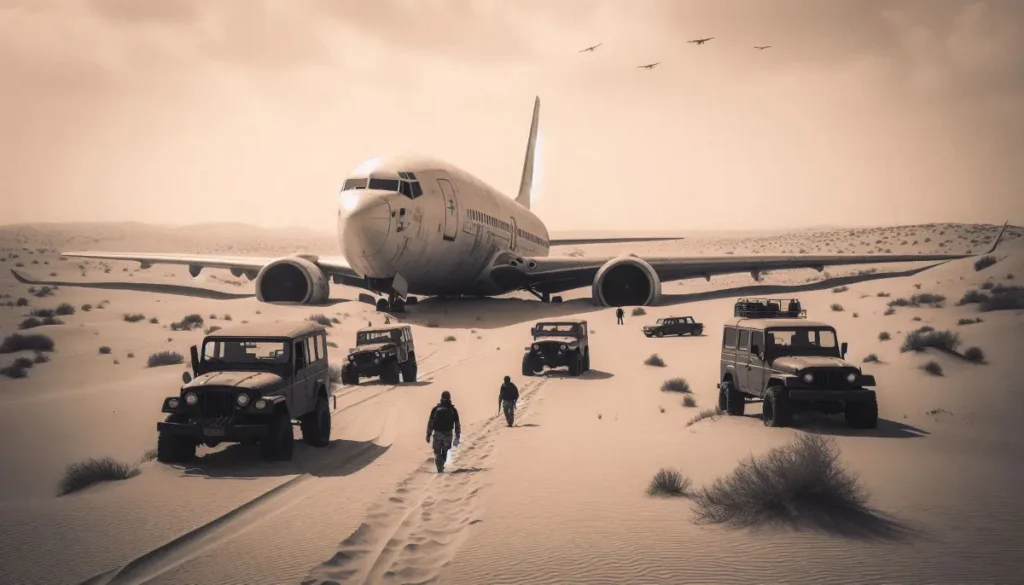There’s been quite a buzz around a new Netflix series on the Kandahar hijacking, titled IC 814. The series is facing criticism for how it portrays the hijackers and the events that unfolded during that time. As always, whenever anything even remotely controversial happens in our country, the usual divides emerge—Left vs. Right, Modi vs. Congress, Nationalist vs. Anti-Nationalist, Hindu vs. Muslim, etc.
Over the years, I’ve learned that such discussions are pointless, like quicksand—once you step into them, there’s no way out. So, I try to steer clear of these debates—life is more peaceful that way.
However, I couldn’t resist sharing my views on this controversy. I feel it’s only right to pass on what I remember as a bystander who lived through that time to the younger generation, who might have been too young to recall or weren’t even born yet. And I don’t buy the argument that we have bigger things to worry about, and therefore, should not focus on such ‘trivial’ matters. Movies and books play a crucial role in influencing the youth and shaping the discourse of a nation, so they have a greater responsibility than just providing entertainment. Nor do I understand our fixation with the either-or approach. Why can’t we demand that our governments ensure history isn’t whitewashed in films AND simultaneously enforce stricter laws for heinous crimes against women AND also improve infrastructure? Why assume that one has to happen at the cost of the other?
Coming back to the incident this series ‘claims’ to bring to the screen…
I still remember the Kandahar hijacking of 1999 as if it happened yesterday. There are a few major events in history that stay etched in your mind forever. I’ve witnessed my share of such moments—Rajiv Gandhi’s assassination, the riots of 1992, etc. But I was just a kid during those times and didn’t grasp the full consequences of those events. The Kandahar hijacking was probably the first major event I truly remember.
I was in my teens, and the incident happened during my school’s winter break. Back then, we didn’t have as many TRP-hungry news channels filled with pointless debates and shouting matches. The news about the hijacking was on the front page of every newspaper, and we eagerly waited for the evening news, hoping to hear something positive.

The plane, en route from Kathmandu to Delhi, was taken over by five hijackers belonging to a Pakistani terrorist group and flown to Kandahar, Afghanistan. They held the hostages captive there for a week until their demands were met—demands that included the release of three high-profile terrorists, one of whom was Masood Azhar. Masood Azhar later founded Jaish-e-Mohammed, a terrorist group that carried out numerous terrorist attacks in India since its formation.
One of the most heart-wrenching moments of the hijacking, a memory that has stayed with me all these years, is of a young man in his twenties who was killed by the terrorists inside the plane—stabbed multiple times, his throat slit, and his body thrown out of the plane. He was traveling with his wife, was newly married and they were returning from their honeymoon. The image of that man and his young, devastated widow has haunted me ever since.
In the Netflix series, the hijackers are depicted as almost sympathetic characters, engaging in light-hearted activities with the hostages—a stark contrast to the real-life horrors they inflicted and the trauma the hostages endured.
I understand the need for creative license, and I can even extend the benefit of the doubt for using code names instead of the real names of the terrorists. But when a work is based on true events, I can’t help but wish that the producers had given a passing thought to that widow before whitewashing the cruelty inflicted by these terrorists and portraying them as gentlemanly figures who entertain their captives by playing antakshari.
Is that really too much to ask?
Thanks for reading. Please leave a comment with your thoughts. And share this blog with whoever you think might like it.
Go Deeper on Data, Finance, and Productivity
If you enjoyed this article, you’ll love my newsletter, Compound Knowledge, where I share actionable ideas and the best resources I’ve found to help you uplevel your skills in data, finance, and productivity. It’s concise, valuable, and free.
Join the inner circle of readers and get insights directly in your inbox.
Photo Credit:
- All images generated using Dall-E by yours truly.
very well done 👍🏻, Me too remembered some clips, the newspaper headlines and news channel videos but not remembered very clearly.